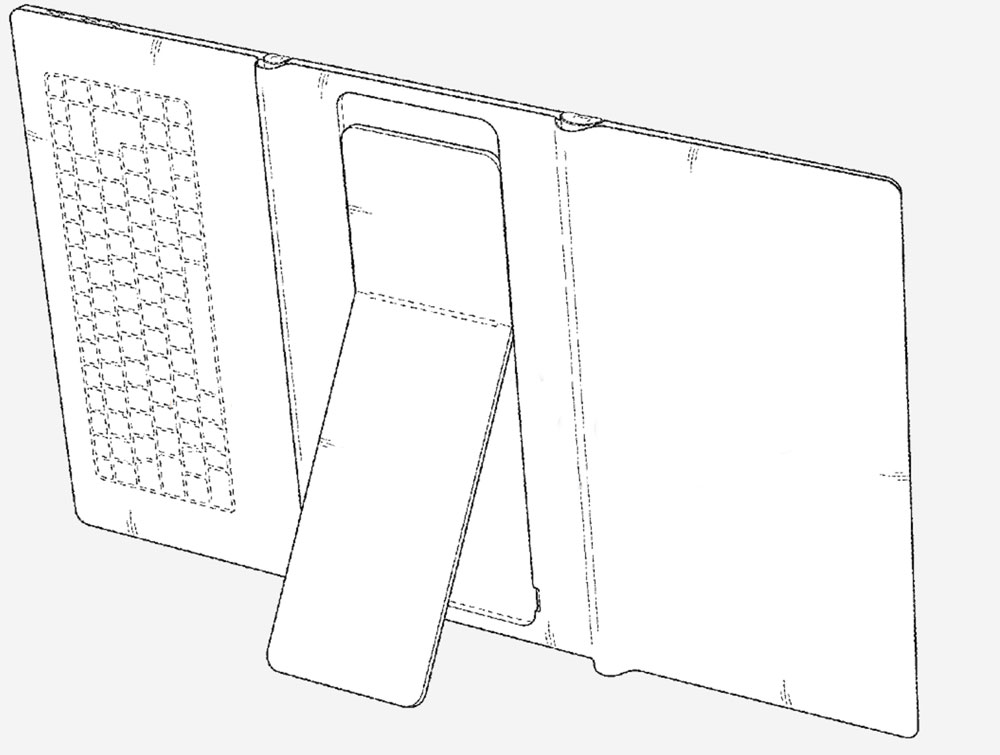This is the future 12.9 inch Apple iPad Pro competitor that folds like a paper magazine

Portability is the Achilles heel of large tablets like the 12.9 inch iPad Pro. As powerful as it is , Apple’s flagship tablet aimed at enterprise customers is both too bulky to be used outdoors, and too big to be used with only one hand, which is why Apple has released a 9.7 inch version of the iPad Pro this year.
According to a report by Patently Mobile, it seems that Samsung may be considering a future of large tablets that fold like newspapers, to make them easier to use while traveling.
Patently Mobile has not provided any direct link to the patent itself, nor a reference number that can be looked up, aside from patent drawings that suggest a number of forms in which Samsung is likely looking to implement.
One of the designs features a tri-fold configuration with a kickstand, which would be ideal when multitasking between multiple column applications. For instance, one column could feature a twitter feed, another could be news, and a third could be a productivity application, like Evernote or Google Keep.
Patently Mobile is quick to point out that this is actually a “design patent”, and not a “patent application”. The difference is that, while a patent application includes a detailed abstract, use cases and a number of applications that fit the purpose of the invention in details that include materials, internal hardware, and some aesthetic clues, a “design patent” is simply a visual representation of a generic idea, or direction, for a future patent application.
In essence, Samsung may be a very long way from a production ready prototype, even if the South Korean consumer electronics giant has unveiled a few exciting working prototypes of flexible displays in past editions of CES.
How would that work?
Implementing a flexible display is not only a problem of bending a touchscreen. It also presents a problem with the operating system having to deal with a display capable of folding onto itself. To operating systems like iOS or Android, the world is very much Euclidean, by which we mean that anything that is flat remains flat. A display is a flat paradigm that most operating systems may have trouble understanding, as they are not programmed to manage a display that is, not only, three-dimensional, but also capable of bending is a way that required images and controls to be projected not only in terms of pixels, but in radial units as well.
For instance, if we were to work with a flexible iPad Pro, iOS needs to understand the angle at which the screen bends, and where, in order to display and organize applications properly. iOS 10 features like Picture-in-Picture would also need to adapt to find their position and size for optimal viewing, by means of the operating system splitting the display procedurally where it bends, to generate viewports accordingly, in a similar way as Split-View, but using a radial unit of measure.
Ready to shop?
Shop for the ultimate deals in productivity at PortableOne where you’ll find the latest, powerful iPad Pro , as well as a complete range of accessories.